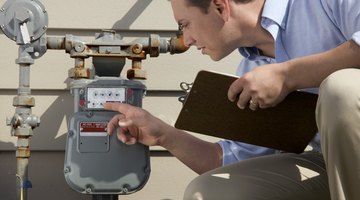Parts of the Water Meter
Table of Contents
Municipal or privately-owned water utilities install meters when connecting homes to their water supplies. The water meter records the amount of water the household uses, measuring it in either gallons or cubic feet.

When the utility reads the meter, the amount of water used since the last reading is calculated and is the basis for the household water bill. There are two basic types of residential water meters: analog models, where a mechanical counter keeps track of water usage, and electronic models.
Main case
The main case is the housing containing all of the other parts. One end of the case is attached to the water line coming into the house, and the other is attached to the primary household water pipe. The units are typically made of cast bronze, which is extremely rust-resistant.
Cover and Gasket
Atop the main case is a gasket, which provides a seal between the case can the cover assembly. The meter cover is usually made of the same material as the main case, cast bronze. The top of the cover is hinged.
Cover Bolt and Washer
The main case cover is secured to the main case with a bolt and washer. Most are made of a rust-resistant material, such as bronze or stainless steel.
Inner Workings
Located inside the main case are the parts that control and measure the amount of water entering the house. They consist of the measuring assembly, a strainer and an O-ring seal.
Analog Registers
Seated atop the measuring assembly is the register. This is the part that records the amount of water usage. A mechanical analog register looks and functions much like the odometer in your car, which measures the miles you have traveled. In some communities, homeowners read their own meter every 90 days and send the meter reading to the water utility.
Electronic Components
Newer water meters have no moving parts. Instead, they have a vibrating magnetic sensor installed inside the meter housing that sends electronic signals directly to the water system operator (utility). This technology frees homeowners from having to read their own meters and allows the utility to calculate water usage more quickly and accurately.
The Drip Cap
- Municipal or privately-owned water utilities install meters when connecting homes to their water supplies.
- Atop the main case is a gasket, which provides a seal between the case can the cover assembly.
- This is the part that records the amount of water usage.
- In some communities, homeowners read their own meter every 90 days and send the meter reading to the water utility.
- Newer water meters have no moving parts.
Writer Bio
Rich Finzer earned his boating license in 1960 and started his writing career in 1969. His writing has appeared in "Northern Breezes," "Southwinds," "Living Aboard," "Good Old Boat," "Latitudes & Attitudes," "Small Craft Advisor," "Life in the Finger Lakes," "BackHome" and "Dollar Stretcher" magazines. His maple syrup has won awards in competition. Rich has a Bachelor of Science in communications from Ithaca College.
Photo Credits
- Jupiterimages/liquidlibrary/Getty Images
- Jupiterimages/liquidlibrary/Getty Images
More Articles



